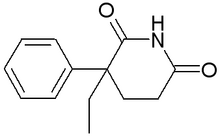G.W.A. MILNE. Drugs: Synonyms and Properties. (An International Guide to 10,000 Drugs). Brookfield VT Ashgate Publishing Co., 2000. xx + 1267 pp., $250.00 (Hardcover).
With over 14,000 drugs listed in the United States Pharmacopeia (USP), and each one having at least three names (chemical, generic & trade), it can be difficult keeping track of all of them. Add to this the international marketing of the same compounds but with different trade names in each country and it soon becomes apparent that a resource collating all of this information into a single volume can be very useful. This is precisely what G.W. A. Milne has done with Drugs: Synonyms and Properties.
This tome lists approximately 10,000 representative drugs in common use and provides all of the names as well as some physical properties. In Part I each drug is listed by its Entry Name alphabetically in each therapeutic category. The Entry Name is usually the US Adopted Name (USAN). Trivial or obscure drugs have been omitted, although it is not stated what factors were used to determine this. Compounds with multiple pharmacological uses (e.g., antiarrhythmic agent with coronary vasodilator properties) are listed in appropriate sections (Antiarrhythmics and Coronary Vasodilators) producing some duplication. Along with the Entry Name each drug is listed with its Chemical Abstracts Service (CAS) Registry Number (RN) which is a unique identifier for each compound. Also included is the monograph number from the 12th edition of the Merck Index and the European Inventory of Existing commercial Chemical Substances (EINECS) number. The chemical name, molecular formula and list of trade names and synonyms are provided along with physical chemical properties. The physical chemical properties listed are sometimes nonexistent (e.g., Metiprenaline), only the melting point (e.g., Pirbuterol Hydrochloride), or reasonably informative (e.g., Glutethimide) with melting point (of the racemate and individual enantiomers), UVmax, solubility in several solvents and optical rotation. Known biological data such as LD50 values are also provided for some drugs. No structures are provided.
Part II is composed of three indexes listing the drugs by CAS Registry Number, EINECS Number and Names and Synonyms. The third, and shortest, section is a directory of manufacturers and suppliers. This section provides addresses, telephone numbers and web page URLs.
Pharmaceutical researchers, pharmacists and physicians will find this book to be valuable for rapid retrieval of basic information, especially if presented with the name of a compound from a foreign market. I would recommend this book for all pharmacy and medical school libraries, but the price is probably too steep for individual purchases.
James J. Knittel
University of Cincinnati
Copyright American Association of Colleges of Pharmacy Winter 2000
Provided by ProQuest Information and Learning Company. All rights Reserved



